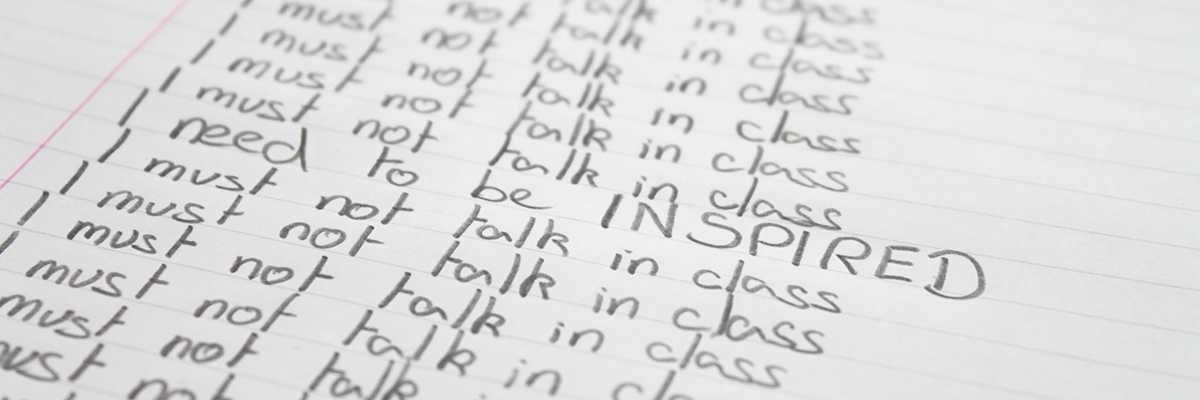Building Better Behaviour
- Behaviour
- Schools
- Teachers

As educators, we all know how important good behaviour is – if our children are behaving well, we can get on with teaching, and they can get on with learning. However, it’s important to bear in mind that, when they are with us, our students are not just behaving in order to learn, they are also learning how to behave.This is particularly so with young children, because the younger a child is, the less likely they are to understand the ‘why’ behind good behaviour, and the more likely their behaviour is to be influenced by external factors such as tiredness, hunger, over stimulation or stress. When looking to build better behaviour, a key aim should be to help children learn how and why they need to regulate their behaviour for themselves, rather than their teacher always doing all the work for them.
One day our students will leave us and go out into the world. As adults, they will need to make decisions about how to behave, and we want them to understand how to make good choices as a result of how and what we teach them. Clearly we need to scaffold behaviour for children and young people, and put strategies in place to support them. However, if we only ever use extrinsic methods to do this (the classic system of rewards and consequences) there is the danger that they might come to believe the main reason to behave is either to gain a reward or avoid a sanction. In the desire to get on with our teaching, we can inadvertently send the message that ‘doing the right thing’ is not necessarily a good aim in and of itself.
Much of the current approach to behaviour management in schools is based on the theory of behaviourism – the idea that a promise of a reward and/or the threat of a sanction (an external stimulus) can help us control people’s behaviour. You can see this technique in use in the majority of school behaviour policies – a series of warnings are followed by a detention, or a child moves down on a chart from green, to amber, to red, before losing their play or golden time. Restorative approaches – those strategies that seek to understand and address the underlying issues behind behaviour in order to resolve them – are actually relatively rare in mainstream schools. In fact, the use of consequences seems to be going through a resurgence in popularity, with an increase in ‘zero tolerance’ approaches to behaviour, with behaviour very tightly controlled and any misbehaviour – no matter how small – invoking an immediate sanction.
However, pure behaviourism will always have its limitations, particularly when it comes to building self-regulation. When we use a simplistic this behaviour = that consequence approach, we cannot really adjust for the complexities of the human beings we teach. Nor is a pure behaviourist approach particularly useful for helping children to understand the reasons behind ‘good’ behaviour. In order to build your students’ self regulation, the following strategies can be helpful:
- Look for the positive – highlight those children who are doing what you want and regulating their behaviour by themselves. ‘Catch them being good’ and talk about why their behaviour is appropriate. This is a pretty counterintuitive thing to do, so you will need to make a conscious effort to do it.
- Always narrate the why of the behaviour you need – to the whole class as well as to individuals. Explain the purpose of the behaviour, even if you are giving a sanction for it.
- Phrase behaviour as a choice, stressing the positive choices and why they are the right ones. Make it clear that you would rather avoid using consequences but you need the child to take responsibility for their own behaviour in order to do so.
- Look at patterns of behaviour, and be honest with yourself about the impact that consequences have on the children who are always in trouble. Aim to offer children a way out of a tricky situation – it is all too easy for a misbehaving child to feel ‘trapped’ and to react defensively.
- Use methods that encourage the children to bring themselves to you, rather than you doing all or most of the work. For instance, using a non-verbal signal to gain silence from a class. Agree the signal ahead of time and allow the children a chance to respond to it before you intervene with your voice, even if it feels like they are being slow. The more often they come to you of their own accord, the more able they will become to regulate their own reactions.
A really useful tip when thinking about self-regulation is to reflect on the ‘whys’ of your own behaviour as an adult. For instance, when you are driving, do you always obey the speed limit and if not, why not? Our behaviour as adults can give us useful insights into why our children might struggle to regulate their behaviour for themselves, and what we can do to help them.
Sue Cowley is an author, teacher and presenter. Her books include the international bestseller Getting the Buggers to Behave.Her latest book is The Ultimate Guide to Differentiationpublished by Bloomsbury.
)


